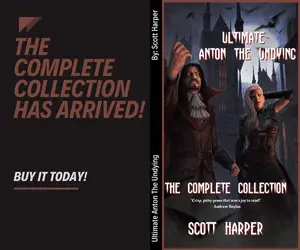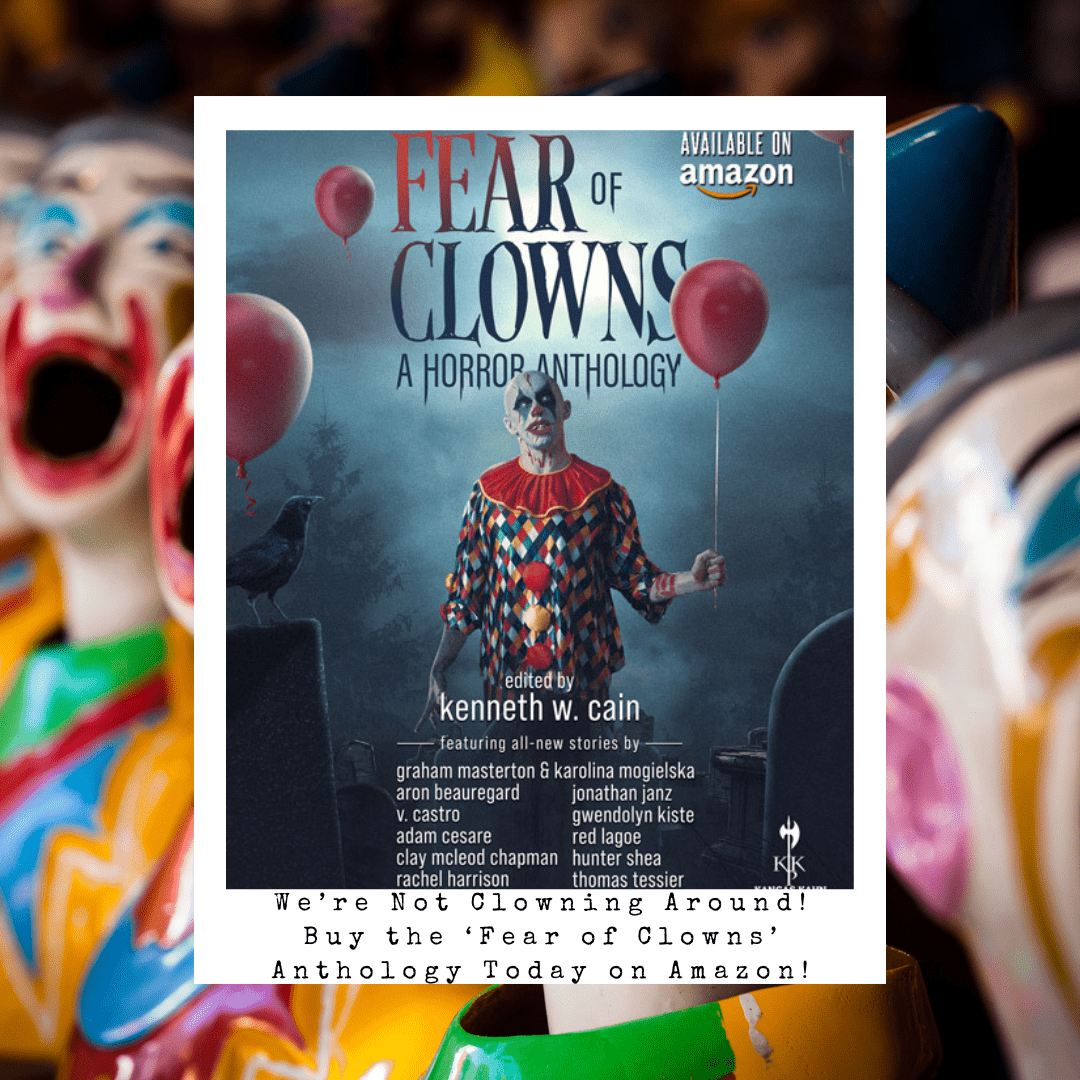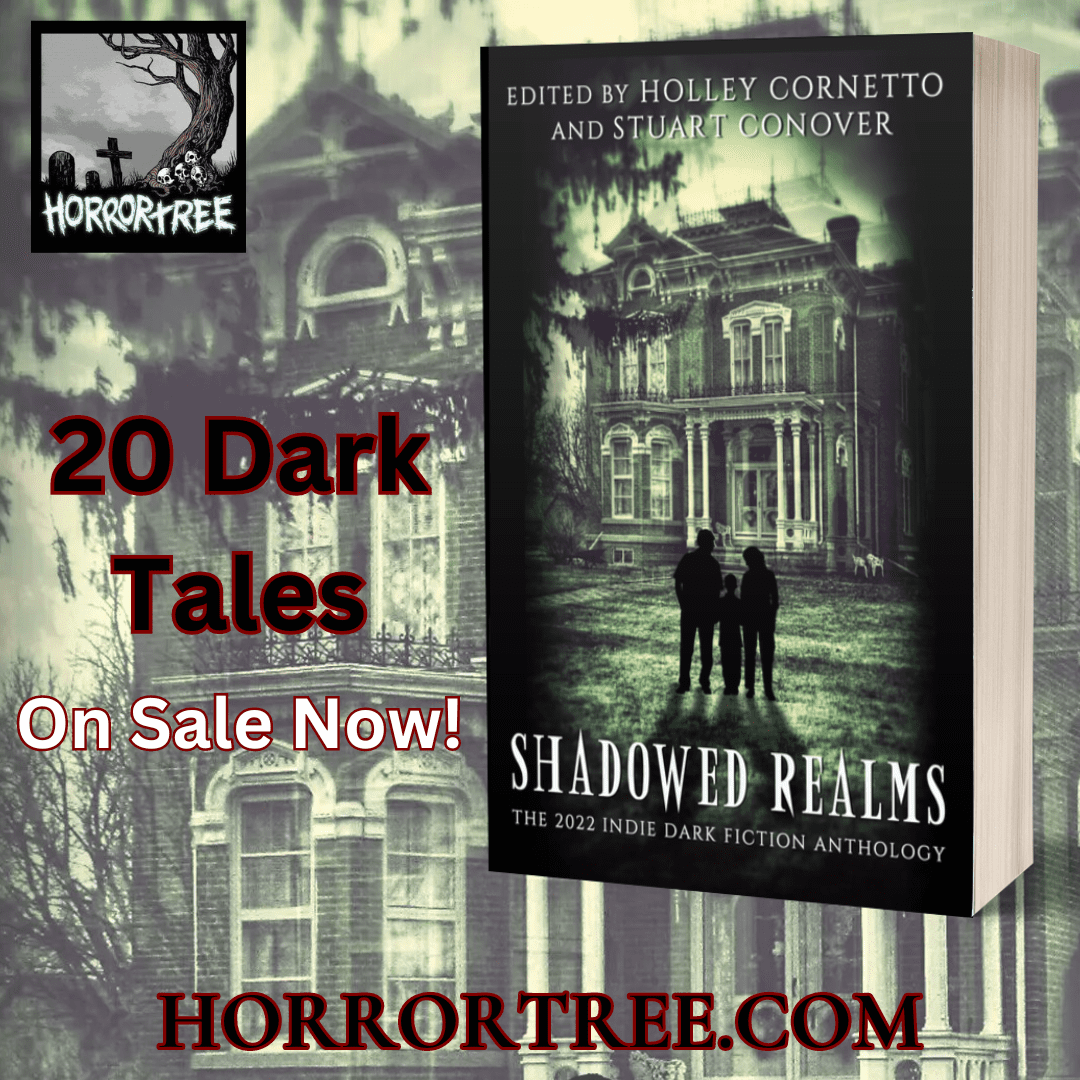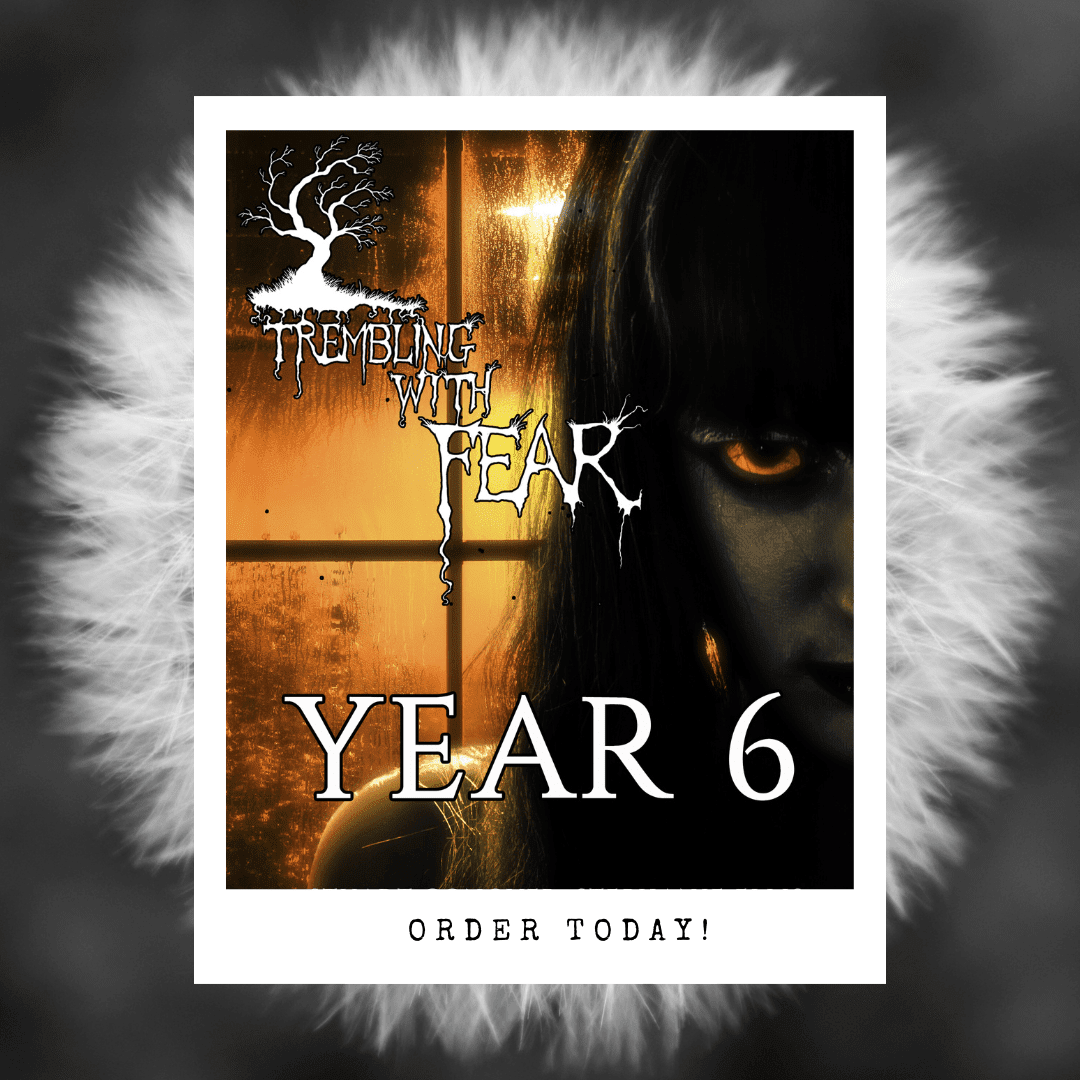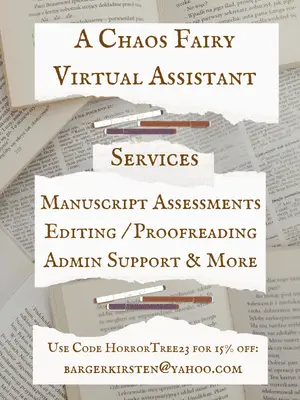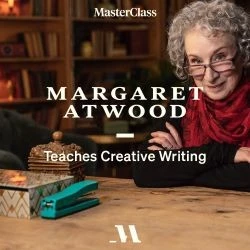Trajan’s Arch Blog Tour – On Mythic Fiction
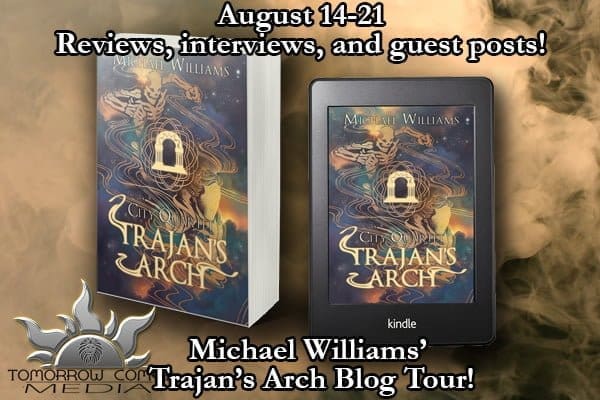
On Mythic Fiction
Among the intriguing things said by my remarkable Classics professor back in grad school, the one that stuck with me the most was that Greek religion had been invented by poets. The wedding of story with profound mysteries and truths makes for the best religion and best fiction, I think, and as a writer, even of more realistic (or quasi-realistic) fiction, I like for my work to have a kind of mythic resonance—a feel and structure that deepens the emotional and imaginative feel of a piece.
It’s a quality that I find as well in a lot of fiction I like to read. Sometimes I can recognize the writing’s specific connection with ancient and powerful sources, but far more often it comes in the hint of the story’s connection to older stories, older patterns—a signal that its intent is to brush up against primal, eternal questions and truths, and more importantly, to treat those truths in all their nuance, complexity, and contradictions.
If part of fiction is, indeed, exploration (and I think it is), tapping into mythic suggestion and pattern can be part of the process of exploring. Joyce’s Ulysses and George Lucas’s Star Wars films (the early trilogy, and I think the best of them) adopt the structure of myth in very different ways, but all of them brush against profound currents of story, letting us know that the issues they address are common to all of us, complex and deep in their experience. I think that writers can ready their fiction to enter that kind of realm by listening to old stories, old patterns; so I like to play with myths and structures in the process of inventing stories of my own.
The easiest way to do this is to re-position or “translate” a myth from its world to the one in which your story is set. I don’t mean a retelling of (or reflection on) the myths (though Canongate’s series contains some remarkable writers), nor do I mean Percy Jackson stories in which mythological figures appear as characters—the Riordan books may be good, but I haven’t read them. I’m thinking of 20th century novelists like Joyce, Robertson Davies, John Banville, who use myth to underpin stories set in more contemporary realities, lending otherwise realistic stories a kind of evocative feel and intent.
How does a lesser writer get at these qualities? How do I allow my stories to brush against mythic worlds, to allow opportunities for me to re-examine my otherwise simpler story with an eye toward its larger, wider, and deeper implications? How do you bring the magic to the mundane, the profound to the everyday?
The easiest way is to “translate” the myth—reset the Odyssey in 20th century Dublin, as Joyce does in Ulysses, or the Orpheus story as that of an Indian rock star, as Salman Rushdie does in The Ground Beneath Her Feet. This kind of activity asks you to consider everyday life as the stuff of myth, because modern people are still mythmakers, still hunger for rapt and meaningful story, and story set in our own surroundings. In my own novel, Vine: An Urban Legend, I recast Euripides’ Bacchae into a story about a group of amateur actors, working in a small mid-Southern city, set on performing…of all plays…Euripides’ Bacchae. As the original Greek tragedy did millennia ago, my own story becomes dark and bloody, addressing issues that strike me as large and eternal questions. Trajan’s Arch combines elements of The Odyssey and of the myth of Orpheus with archetypal patterns of coming-of-age, set in a plausible, even realistic span of the 1970s and 80s.
But the story doesn’t have to retell a myth to recapture the mythic. There are famous maps and patterns, largely outlining the stages of a hero’s journey, which underlie a number of modern narratives. Joseph Campbell’s monomyth, Vladimir Propp’s outline of Russian folk tale, Walter Otto’s hero’s journey, the Native American myths of immersion and concealment that are found in women’s rituals of initiation—all can be adopted as story patterns that, if used flexibly and inventively, can give a story depth and universality.
In short, read myths and books about myth. I’d advise Campbell, Karen Armstrong’s Short History of Myth, and spending a week in the worlds of Ovid’s Metamorphoses. If you don’t emerge with new and transforming ideas for your stories, this exercise is not for you. I know simply that it is for me, a never-ending and fascinating resource in the craft.
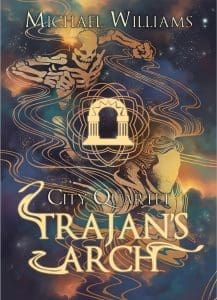 Book Synopsis for Trajan’s Arch: Gabriel Rackett stands at the threshold of middle age. He lives north of Chicago and teaches at a small community college. He has written one novel and has no prospects of writing another, his powers stagnated by drink and loss. Into his possession comes a manuscript, written by a childhood friend and neighbor, which ignites his memory and takes him back to his mysterious mentor and the ghosts that haunted his own coming of age. Now, at the ebb of his resources, Gabriel returns to his old haunts through a series of fantastic stories spilling dangerously off the page–tales that will preoccupy and pursue him back to their dark and secret sources.
Book Synopsis for Trajan’s Arch: Gabriel Rackett stands at the threshold of middle age. He lives north of Chicago and teaches at a small community college. He has written one novel and has no prospects of writing another, his powers stagnated by drink and loss. Into his possession comes a manuscript, written by a childhood friend and neighbor, which ignites his memory and takes him back to his mysterious mentor and the ghosts that haunted his own coming of age. Now, at the ebb of his resources, Gabriel returns to his old haunts through a series of fantastic stories spilling dangerously off the page–tales that will preoccupy and pursue him back to their dark and secret sources.

Michael Williams
Over the past 25 years, Michael Williams has written a number of strange novels, from the early Weasel’s Luck and Galen Beknighted in the best-selling DRAGONLANCE series to the more recent lyrical and experimental Arcady, singled out for praise by Locus and Asimov’s magazines. In Trajan’s Arch, his eleventh novel, stories fold into stories and a boy grows up with ghostly mentors, and the recently published Vine mingles Greek tragedy and urban legend, as a local dramatic production in a small city goes humorously, then horrifically, awry.
Trajan’s Arch and Vine are two of the books in Williams’s highly anticipated City Quartet, to be joined in 2018 by Dominic’s Ghosts and Tattered Men.
Williams was born in Louisville, Kentucky, and spent much of his childhood in the south central part of the state, the red-dirt gothic home of Appalachian foothills and stories of Confederate guerrillas. Through good luck and a roundabout journey he made his way through through New England, New York, Wisconsin, Britain and Ireland, and has ended up less than thirty miles from where he began. He has a Ph.D. in Humanities, and teaches at the University of Louisville, where he focuses on the he Modern Fantastic in fiction and film. He is married, and has two grown sons.

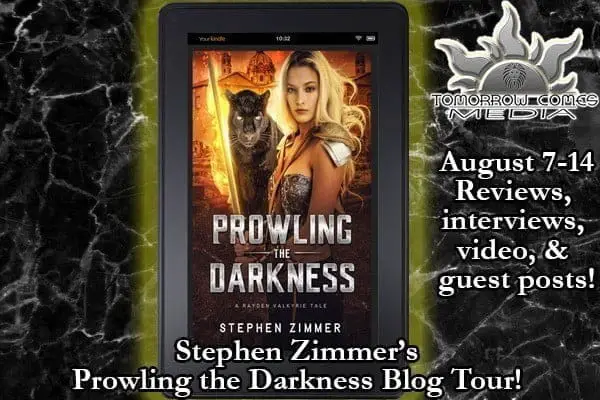
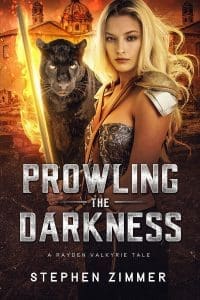 Take a journey east with Rayden Valkyrie as she undertakes one of her most harrowing adventures yet! Prowling the Darkness is the latest release in the Rayden Valkyrie Tales!
Take a journey east with Rayden Valkyrie as she undertakes one of her most harrowing adventures yet! Prowling the Darkness is the latest release in the Rayden Valkyrie Tales! About the author: Stephen Zimmer is an award-winning author and filmmaker based out of Lexington Kentucky. His works include the Rayden Valkyrie novels (Sword and Sorcery), the Rising Dawn Saga (Cross Genre), the Fires in Eden Series (Epic Fantasy), the Hellscapes short story collections (Horror), the Chronicles of Ave short story collections (Fantasy), the Harvey and Solomon Tales (Steampunk), and the forthcoming Faraway Saga (YA Dystopian/Cross-Genre).
About the author: Stephen Zimmer is an award-winning author and filmmaker based out of Lexington Kentucky. His works include the Rayden Valkyrie novels (Sword and Sorcery), the Rising Dawn Saga (Cross Genre), the Fires in Eden Series (Epic Fantasy), the Hellscapes short story collections (Horror), the Chronicles of Ave short story collections (Fantasy), the Harvey and Solomon Tales (Steampunk), and the forthcoming Faraway Saga (YA Dystopian/Cross-Genre).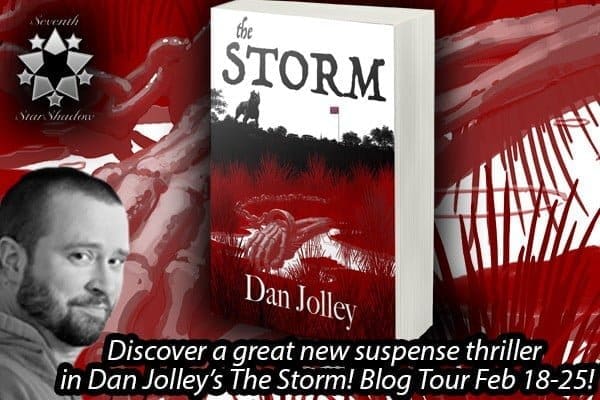
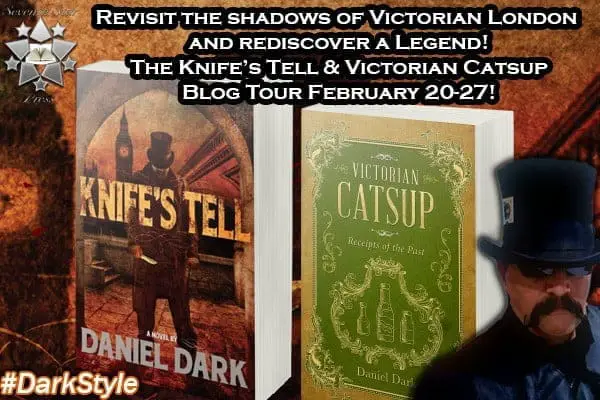
 About the author: Daniel Dark, a native of Nashville, Tennessee, grew up with homicide every day. Having a homicide detective as a father, he was able to learn about those that were brought to justice, and the ones that were not.
About the author: Daniel Dark, a native of Nashville, Tennessee, grew up with homicide every day. Having a homicide detective as a father, he was able to learn about those that were brought to justice, and the ones that were not.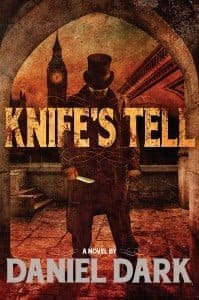 Book Synopsis for Knife’s Tell: In 1888 one of the most notorious serial killers in history plagued London’s East Side.
Book Synopsis for Knife’s Tell: In 1888 one of the most notorious serial killers in history plagued London’s East Side.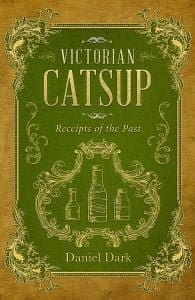 Book Synopsis for Victorian Catsup- Receipts from the Past: The book you now hold in your hands is nothing new, only forgotten by most.
Book Synopsis for Victorian Catsup- Receipts from the Past: The book you now hold in your hands is nothing new, only forgotten by most. 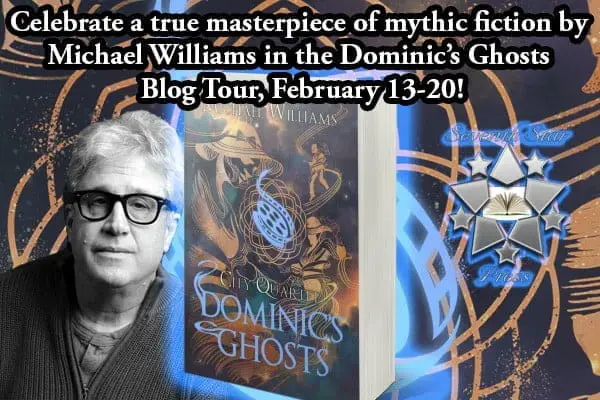
 About the author: Over the past 25 years, Michael Williams has written a number of strange novels, from the early Weasel’s Luck and Galen Beknighted in the best-selling DRAGONLANCE series to the more recent lyrical and experimental Arcady, singled out for praise by Locus and Asimov’s magazines. In Trajan’s Arch, his eleventh novel, stories fold into stories and a boy grows up with ghostly mentors, and the recently published Vine mingles Greek tragedy and urban legend, as a local dramatic production in a small city goes humorously, then horrifically, awry.
About the author: Over the past 25 years, Michael Williams has written a number of strange novels, from the early Weasel’s Luck and Galen Beknighted in the best-selling DRAGONLANCE series to the more recent lyrical and experimental Arcady, singled out for praise by Locus and Asimov’s magazines. In Trajan’s Arch, his eleventh novel, stories fold into stories and a boy grows up with ghostly mentors, and the recently published Vine mingles Greek tragedy and urban legend, as a local dramatic production in a small city goes humorously, then horrifically, awry. Book Synopsis for Dominic’s Ghosts: Dominic’s Ghosts is a mythic novel set in the contemporary Midwest. Returning to the home town of his missing father on a search for his own origins, Dominic Rackett is swept up in a murky conspiracy involving a suspicious scholar, a Himalayan legend, and subliminal clues from a silent film festival. As those around him fall prey to rising fear and shrill fanaticism, he follows the branching trails of cinema monsters and figures from a very real past, as phantoms invade the streets of his once-familiar city and one of them, glimpsed in distorted shadows of alleys and urban parks, begins to look uncannily familiar.
Book Synopsis for Dominic’s Ghosts: Dominic’s Ghosts is a mythic novel set in the contemporary Midwest. Returning to the home town of his missing father on a search for his own origins, Dominic Rackett is swept up in a murky conspiracy involving a suspicious scholar, a Himalayan legend, and subliminal clues from a silent film festival. As those around him fall prey to rising fear and shrill fanaticism, he follows the branching trails of cinema monsters and figures from a very real past, as phantoms invade the streets of his once-familiar city and one of them, glimpsed in distorted shadows of alleys and urban parks, begins to look uncannily familiar.
 About the author: Ruschelle Dillon is a freelance writer whose efforts focus on the dark humor and the horror genres. Ms. Dillon’s brand of humor has been incorporated in a wide variety of projects, including the irreverent blog Puppets Don’t Wear Pants and novelette “Bone-sai”, as well as the live-action video shorts “Don’t Punch the Corpse” and “Mothman”. She also interviews authors for the Horror Tree website.
About the author: Ruschelle Dillon is a freelance writer whose efforts focus on the dark humor and the horror genres. Ms. Dillon’s brand of humor has been incorporated in a wide variety of projects, including the irreverent blog Puppets Don’t Wear Pants and novelette “Bone-sai”, as well as the live-action video shorts “Don’t Punch the Corpse” and “Mothman”. She also interviews authors for the Horror Tree website. Book Synopsis for Artithmophobia: Adam is a young preacher, with a loving wife and a child on the way. His family, his congregation, and his affinity for one particular science fiction movie are enough to keep him happy with his life. But when a new member of that congregation begins to haunt him at seemingly the worst possible moments, he begins to question the weight of his life’s responsibilities. Can he handle being “the one” – the one so many look to in times of need?
Book Synopsis for Artithmophobia: Adam is a young preacher, with a loving wife and a child on the way. His family, his congregation, and his affinity for one particular science fiction movie are enough to keep him happy with his life. But when a new member of that congregation begins to haunt him at seemingly the worst possible moments, he begins to question the weight of his life’s responsibilities. Can he handle being “the one” – the one so many look to in times of need?
 It was these trade links that would lead to Liverpool becoming the major slaving port in the world. It became the centre of what was known as the ‘Triangular trade’: produce from the factories of Lancashire traded for African slaves; then those slaves traded in the Americas for tobacco, sugar and cotton, which returned to the factories and consumers of Britain. Although few slaves ever made it to Liverpool, at one point Liverpool’s merchants controlled 80% of the UK, and 40% of the world’s slave trade. The city grew fat on the proceeds of slavery, but with the abolition of slavery in Britain and its colonies, a new trade took prominence, cotton. In fact, the cotton trade became so important that during the American Civil War, Liverpool merchants sided with the Confederate cause. And although public opinion supported the North, warships and weapons were secretly built in Liverpool and smuggled across the Atlantic in Confederate ‘blockade runners’.
It was these trade links that would lead to Liverpool becoming the major slaving port in the world. It became the centre of what was known as the ‘Triangular trade’: produce from the factories of Lancashire traded for African slaves; then those slaves traded in the Americas for tobacco, sugar and cotton, which returned to the factories and consumers of Britain. Although few slaves ever made it to Liverpool, at one point Liverpool’s merchants controlled 80% of the UK, and 40% of the world’s slave trade. The city grew fat on the proceeds of slavery, but with the abolition of slavery in Britain and its colonies, a new trade took prominence, cotton. In fact, the cotton trade became so important that during the American Civil War, Liverpool merchants sided with the Confederate cause. And although public opinion supported the North, warships and weapons were secretly built in Liverpool and smuggled across the Atlantic in Confederate ‘blockade runners’. During the 19th Century Liverpool was very much a global city, and on any given day more than 1500 sailing ships would crowd its docks. The ships and their cargos came from the four corners of the world, and the multiracial crews lived in its boarding houses and mixed freely in the teaming bars and brothels that surrounded the docks. Herman Melville the author of Moby Dick, visited here as a young seaman in 1834 and wrote of the experience in his book, Redburn, ‘… sailors love this Liverpool; and upon voyages to distant parts of the globe will be constantly dilating upon its charms and attractions, and extolling its virtues above all other seaports in the world’. It was a wild and violent city, but also for black or Asian crews a very equal city. There was no colour bar and many of these sailors settled in Liverpool and raised their families there. For example, Liverpool has a thriving Chinese community, the oldest in Western Europe (established 1834), with its own Chinese Arch (the largest outside of China).
During the 19th Century Liverpool was very much a global city, and on any given day more than 1500 sailing ships would crowd its docks. The ships and their cargos came from the four corners of the world, and the multiracial crews lived in its boarding houses and mixed freely in the teaming bars and brothels that surrounded the docks. Herman Melville the author of Moby Dick, visited here as a young seaman in 1834 and wrote of the experience in his book, Redburn, ‘… sailors love this Liverpool; and upon voyages to distant parts of the globe will be constantly dilating upon its charms and attractions, and extolling its virtues above all other seaports in the world’. It was a wild and violent city, but also for black or Asian crews a very equal city. There was no colour bar and many of these sailors settled in Liverpool and raised their families there. For example, Liverpool has a thriving Chinese community, the oldest in Western Europe (established 1834), with its own Chinese Arch (the largest outside of China). However the largest cultural impact on Liverpool itself came not from the Americas, Africa or even the Far East, but from much closer to home, Ireland. In 1845 the disastrous Irish Potato Famine killed a million people and caused millions to leave Ireland. In the space of three years, two million Irish landed in Liverpool seeking passage to a new life, and many of the poorest could go no further. In the census of 1861 a third of the population of the city had been born in Ireland. Liverpool ceased to be an English city, but neither was it an Irish one. The mixing of these two cultures, together with the Scots, Welsh, African, Chinese and even Jews escaping Russian Pogroms, made it what it is today. In fact Carl Jung once called Liverpool, ‘The Pool of Life’, as he thought it represented the whole world in one place.
However the largest cultural impact on Liverpool itself came not from the Americas, Africa or even the Far East, but from much closer to home, Ireland. In 1845 the disastrous Irish Potato Famine killed a million people and caused millions to leave Ireland. In the space of three years, two million Irish landed in Liverpool seeking passage to a new life, and many of the poorest could go no further. In the census of 1861 a third of the population of the city had been born in Ireland. Liverpool ceased to be an English city, but neither was it an Irish one. The mixing of these two cultures, together with the Scots, Welsh, African, Chinese and even Jews escaping Russian Pogroms, made it what it is today. In fact Carl Jung once called Liverpool, ‘The Pool of Life’, as he thought it represented the whole world in one place. The inhabitants of Liverpool, whatever their creed or colour are officially called Liverpudlians, but more commonly referred to as ‘Scousers’. This nickname being derived from a local stew called, Scouse, which in turn gives its name to the local dialect. The accent is a distinctive mixture of English and Irish and will be familiar to anyone who remembers the Beatles.
The inhabitants of Liverpool, whatever their creed or colour are officially called Liverpudlians, but more commonly referred to as ‘Scousers’. This nickname being derived from a local stew called, Scouse, which in turn gives its name to the local dialect. The accent is a distinctive mixture of English and Irish and will be familiar to anyone who remembers the Beatles.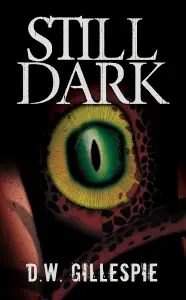 I’ve been writing for about fifteen years at this point. With my first novel, Still Dark, on the market, I’ve been looking back a bit at how I got here. I certainly didn’t think it would take this long to get a novel out, but I’m sure every 20-year-old thinks they’ll be famous by the time they’re 21.
I’ve been writing for about fifteen years at this point. With my first novel, Still Dark, on the market, I’ve been looking back a bit at how I got here. I certainly didn’t think it would take this long to get a novel out, but I’m sure every 20-year-old thinks they’ll be famous by the time they’re 21.
